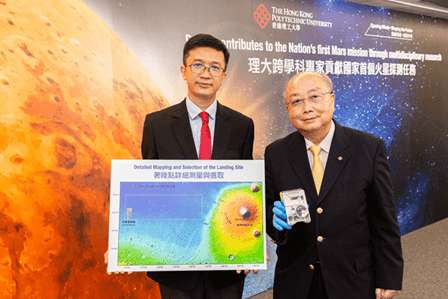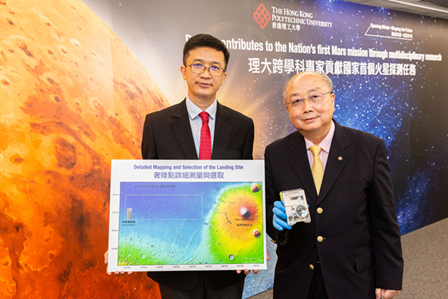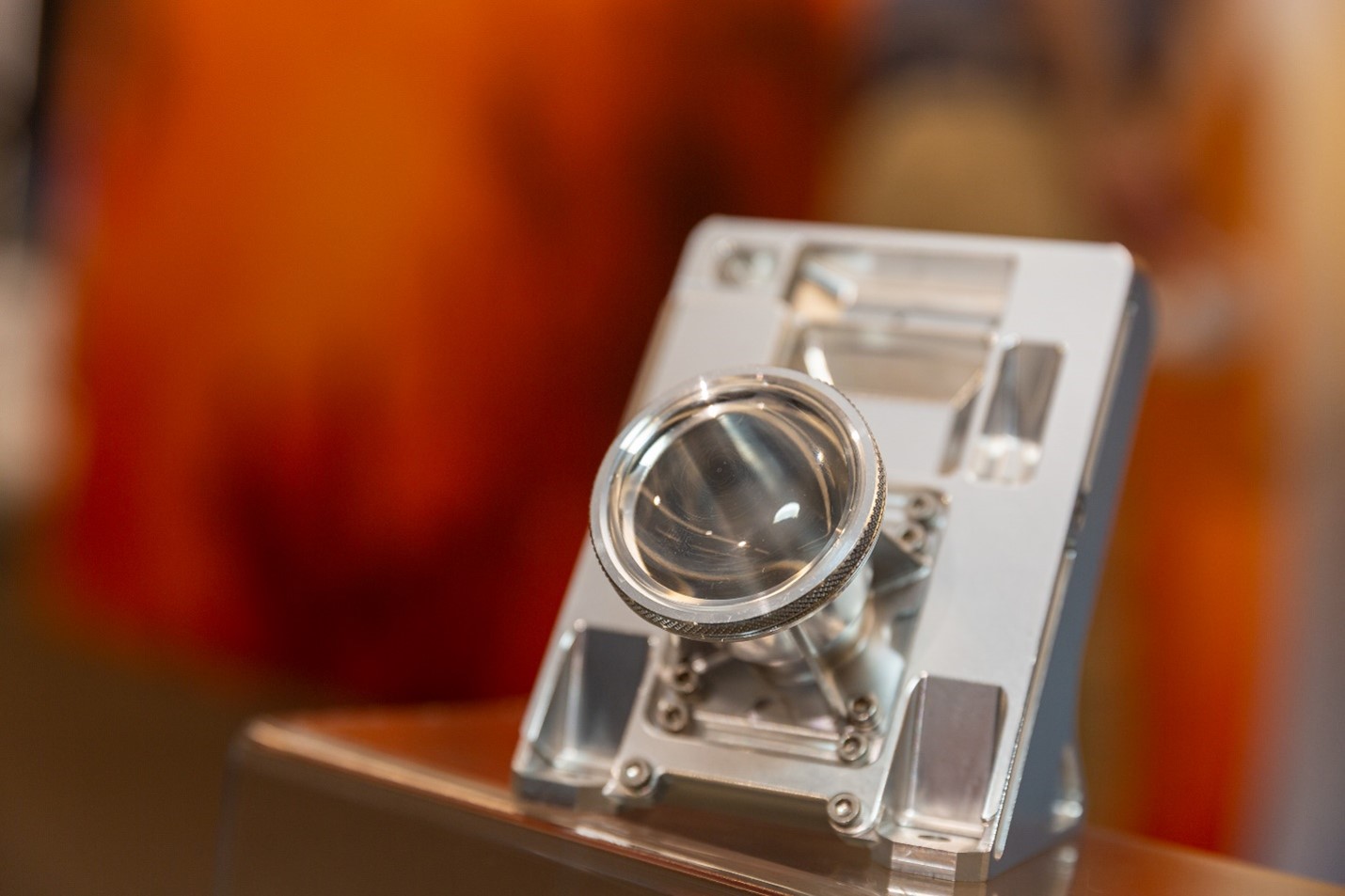PolyU contributes to China’s historic Mars mission Tianwen-1 with multidisciplinary research

Sponsored by

Sponsored by

China landed a spacecraft on Mars for the first time in May 2021 in the Tianwen-1 mission, becoming the second country in the world to land and operate a rover on the Red Planet. PolyU researchers played a vital role in the mission, in collaboration with the China Academy of Space Technology. Professor Wu Bo, from the Department of Land Surveying and Geo-Informatics, and his team identified safe landing sites using advanced topographic mapping and geomorphological analysis technologies. Meanwhile, Professor Yung Kai-leung, Sir Sze-yuen Chung Professor in Precision Engineering, and Associate Head of the Department of Industrial and Systems Engineering, led a team to develop a sophisticated space instrument, the “Mars Landing Surveillance Camera (Mars Camera)” for capturing images of the planet and monitor the status of the Zhurong Mars rover.
Selection of a landing site on Mars
Landing on Mars is a challenging endeavour due to several reasons, such as the complicated Martian surface, the very thin atmosphere as well as possible dust storms. It is therefore of paramount importance to select a landing site that is safe and of scientific significance. From 2017-2020, Professor Wu led a team to carry out global-scale analysis and evaluation to help shortlist three candidate landing regions, namely the Amazonis Planitia, Chryse Planitia, and Utopia Planitia. The team further conducted detailed topographic and geomorphological mapping and analysis of the candidate landing regions, including their elevations, slopes, rock abundances, crater densities, and geological contexts. As a result of the evaluation, a region in the southern Utopia Planitia, the largest recognised impact basin in the northern hemisphere of Mars, was selected as the target landing region.
Development of the Mars Camera
With a wealth of experience in developing sophisticated space instruments, Professor Yung has led a team to undertake the research, design and manufacturing of the Mars Camera since 2017 and successfully completed and delivered the Mars Camera with the corresponding space qualification experiments in less than three years. The Mars Camera is located on the outside top surface of the lander platform, for monitoring the landing status, the surrounding environment of Mars and the movements of the Zhurong rover with respect to the unfolding and status of the solar panels and antennae.
Research Centre for Deep Space Explorations
PolyU has been deeply involved in China’s lunar and Mars missions. To conduct in-depth research into different aspects of aerospace technology, PolyU recently established the Research Centre for Deep Space Explorations. The Centre brings together experts from different fields, such as geology, remote sensing, civil engineering, mechanical engineering, and physics, pushing the frontiers of research to achieve high-impact innovation.

Prof Wu Bo (left) helped identify possible landing regions with advanced topographic mapping and geomorphological analysis technologies. Prof Yung Kai-leung developed a sophisticated space instrument, the “Mars Landing Surveillance Camera”, for capturing images of the surroundings of the Red Planet and monitoring the status of the Zhurong Mars rover.

“Mars Landing Surveillance Camera (Mars Camera)”